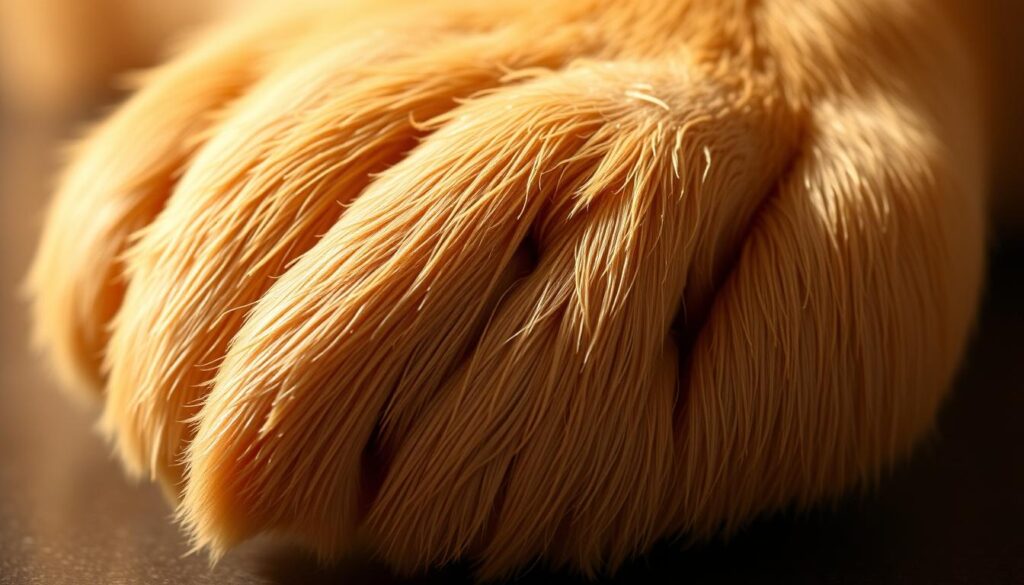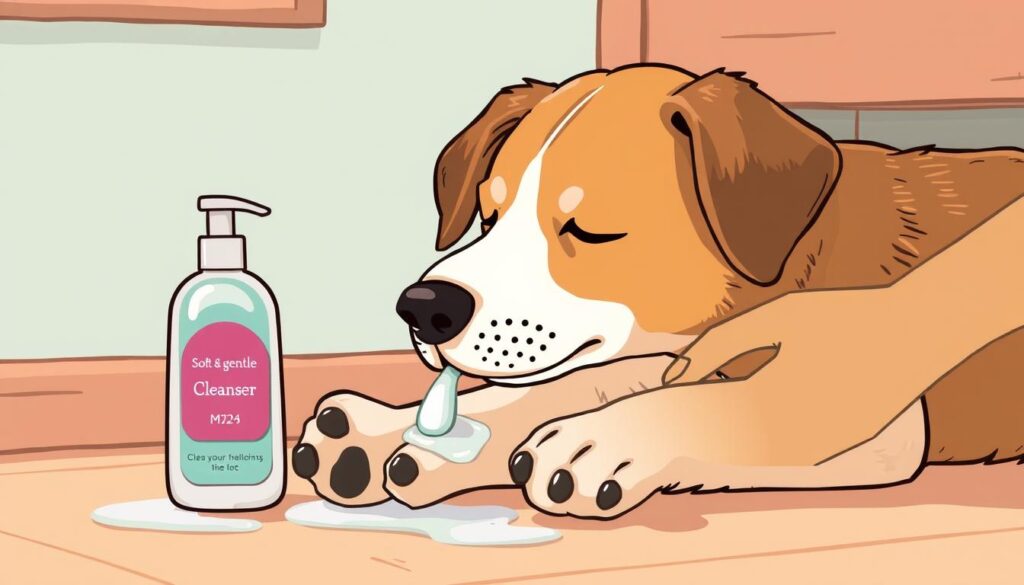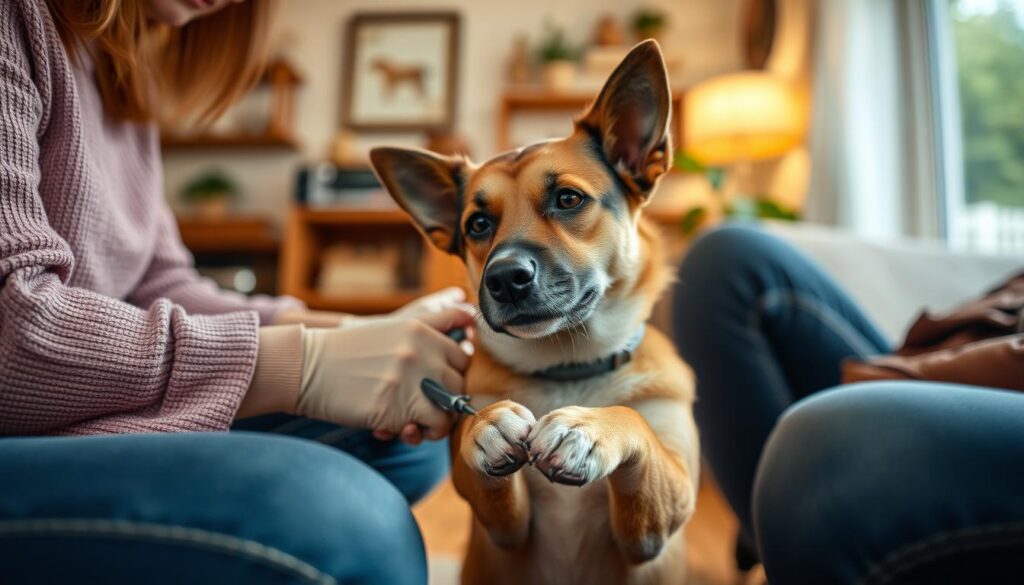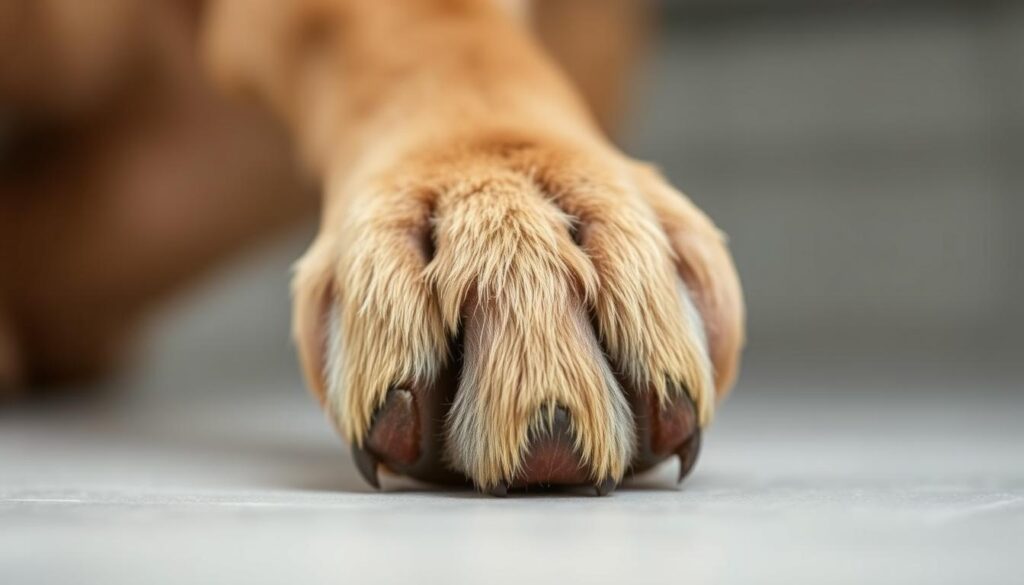Paw & Nail Care in Indoor Environments

As a dog owner, you want to ensure your furry friend's overall health and comfort. While indoor pets may not face the same challenges as outdoor dogs, their paws still require regular maintenance.
Neglecting your dog's paw health can lead to discomfort, infections, and mobility issues. Understanding the structure of your dog's paws and how indoor living affects them is crucial for providing the right care.
By establishing an effective care routine, you can protect your dog's paws from common problems and ensure their overall wellbeing. This guide will walk you through the essential steps for maintaining your dog's paw health, from cleaning techniques to nail trimming procedures.
Understanding the Importance of Indoor Paw Care
As a pet owner, you might overlook the importance of paw care for your indoor pets, but it's crucial for their overall health. Your dog's paw pads are made of a layer of pigmented skin that covers fatty tissue, providing natural cushioning, insulation, and sensory functions.
Why Indoor Pets Still Need Paw Maintenance
Even though your pets stay indoors, their paws can still develop issues. Indoor environments present unique challenges, including dry air that can cause paw pad cracking, slippery surfaces that affect mobility, and household chemicals that may irritate sensitive skin.
Indoor pets need regular paw maintenance to prevent these issues. Limited exercise indoors can lead to inadequate natural nail wearing, making regular trimming essential.
The Structure of Pet Paws and How Indoor Living Affects Them
A dog's paw pads are an integral part of their foot structure, working in conjunction with their nails to provide protection and support. The pads help with balance, traction, stability, and shock absorption.
Indoor living can lead to softer, less calloused paw pads compared to outdoor pets, making them more susceptible to injury. Different indoor surfaces, such as carpets, hardwood floors, and tile, affect paw health differently.
| Indoor Surface | Effect on Paw Health |
|---|---|
| Carpets | Can cause excessive dryness and irritation |
| Hardwood Floors | Can be slippery, causing strain on paws |
| Tile Surfaces | Can be cold and hard, potentially causing discomfort |

Essential Indoor Pet Paw Care Routine

Maintaining your indoor pet's paw health is crucial for their overall well-being. A regular paw care routine can help prevent issues such as dryness, cracking, and the accumulation of dirt and debris.
Regular Inspection: What to Look For
Make it a habit to check your dog's paw pads regularly. Gently spread their toes apart and inspect the sides of their paw pads and between their toes for any injuries or foreign objects like burrs, pebbles, or dangerous foxtails. It's also a good time to check for any swelling or discoloration.
- Establish a weekly routine for inspecting your indoor pet's paws.
- Look for redness, swelling, cuts, or objects lodged between toes.
Cleaning Techniques for Indoor Pet Paws
Even indoor pets accumulate dirt and debris between their paw pads. Use a gentle cleaning approach with warm water and pet-safe cleansers. Avoid harsh chemicals that can irritate your pet's skin.
- Use warm water and a mild cleanser to clean your pet's paws.
- Make sure to clean between the toes and around the paw pads.
Drying and Moisturizing: Preventing Dryness and Cracking
After cleaning, thoroughly dry your pet's paws to prevent moisture-related issues. Apply appropriate moisturizers designed specifically for pet paws to prevent dryness and cracking common in indoor environments with heating or air conditioning.
- Dry your pet's paws thoroughly after cleaning.
- Apply a pet paw moisturizer to prevent dryness and cracking.
Nail Trimming and Maintenance for Indoor Pets

Nail care is an essential aspect of pet grooming, especially for dogs that spend most of their time indoors. Indoor pets require more frequent nail trimming because they don't naturally wear down their nails on rough outdoor surfaces.
How Often to Trim Your Indoor Pet's Nails
Most indoor pets need their nails trimmed every 2-4 weeks. Long nails can change your pet's gait, causing joint pain and potential long-term musculoskeletal problems. Regular trimming helps prevent these issues and keeps your dog comfortable.
Step-by-Step Nail Trimming Guide
To trim your dog's nails effectively, follow a step-by-step approach that includes proper restraint techniques, identifying the quick, and using the right tools for your pet's size. Gradual desensitization to nail trimming can help anxious pets become more comfortable with the procedure over time. Consider using specialized tools like nail grinders for pets that don't tolerate traditional clippers.
Dealing with Overgrown Nails and Dewclaws
Overgrown nails can curl under and grow into a dog's paw pad, especially with dewclaws. Regular checks and trimming can prevent this. Always have styptic powder on hand to quickly stop bleeding if you accidentally cut the quick during trimming.
By following these guidelines, you can keep your indoor dog's nails healthy and prevent potential discomfort or injury.
Common Indoor Paw Problems and Solutions
Indoor living can pose unique risks to your dog's paw health, from dry air to hidden allergens. As a responsible dog owner, it's crucial to be aware of these potential issues to provide the best care for your pet.
Dry and Cracked Paw Pads
Dry, cracked paw pads are a common issue for indoor dogs, often caused by dry air from heating systems. To prevent this, regularly moisturize your dog's paw pads with a suitable paw balm. Keeping the paw pads moisturized can significantly reduce discomfort and the risk of cracking.

Hyperkeratosis and Excessive Paw Pad Growth
Hyperkeratosis is characterized by thickened, rough paw pads that may resemble having "fur" growing from them. This condition can be genetic or a sign of an underlying health issue, necessitating a veterinary assessment. In the meantime, using a paw pad balm can help keep your dog's paws moisturized and protected.
Infections and Irritations Between Toes
Indoor pets are prone to developing infections between their toes due to trapped moisture or excessive licking. Regular inspection and cleaning of the paws can help prevent such issues. If you notice signs of infection, such as swelling or discharge, consult your veterinarian for appropriate treatment options.
When to Seek Veterinary Care for Paw Issues
If your dog shows signs of limping, excessive licking of paws, visible swelling, discharge, or persistent discomfort, it's crucial to seek veterinary care. These symptoms can indicate underlying issues that require professional attention.
| Common Paw Issues | Causes | Solutions |
|---|---|---|
| Dry and Cracked Paw Pads | Dry air from heating systems | Moisturize with paw balm |
| Hyperkeratosis | Genetic or underlying health issues | Veterinary assessment and paw balm |
| Infections Between Toes | Trapped moisture or excessive licking | Regular cleaning and veterinary treatment |
Protecting Indoor Pet Paws Year-Round
Protecting your indoor pet's paws is crucial for their overall health and comfort. While they may not be exposed to the same outdoor hazards as their outdoor counterparts, indoor pets still face risks that can be mitigated with the right care and precautions.
Paw Balms and Moisturizers for Indoor Use
Paw balms specifically formulated for pets create a protective barrier that prevents dryness and minor injuries to paw pads. Regular application can keep your dog's paw pads moisturized and healthy. For more information on caring for your dog's paw pads, visit Preventive Vet.
Indoor-Specific Booties and Paw Covers
Indoor-specific booties with non-slip soles can help senior pets or those with mobility issues navigate slippery indoor surfaces safely. These booties provide traction and can prevent slips and falls, ensuring your dog remains comfortable and secure indoors.
Creating Pet-Safe Surfaces in Your Home
Creating pet-safe zones in your home involves using rugs or runners on slippery floors and ensuring floor cleaning products are pet-friendly. This simple step can significantly reduce the risk of your dog slipping or getting injured on indoor surfaces.
Seasonal Considerations for Indoor Pets
Seasonal considerations include increased indoor humidity in winter to prevent paw pad drying and cooling mats in summer for comfort. Even brief outdoor excursions require paw protection during extreme temperatures to prevent burns from hot pavement or ice-related injuries. Trimming the fur between paw pads regularly can also prevent matting and reduce the collection of household debris.
Conclusion: Maintaining Healthy Paws for a Happier Indoor Pet
As we conclude our comprehensive guide on indoor pet paw care, it's clear that maintaining healthy paws is crucial for your pet's overall wellbeing. Proper paw care is an essential part of responsible pet ownership, even for animals that spend most of their time indoors.
By implementing the strategies outlined in this guide, you can ensure your indoor pet maintains healthy paws year-round. Regular inspection, cleaning, and maintenance of your pet's paws contribute significantly to their overall health and comfort. Establishing a consistent paw care routine helps prevent common issues like overgrown nails, dry pads, and infections that can cause discomfort.
For more detailed information on maintaining optimal paw health, you can visit our resource at Dope Dog. Remember, prevention is always easier and less costly than treatment when it comes to paw-related issues. By paying attention to subtle signs of paw discomfort and consulting with your veterinarian when necessary, you can help ensure your indoor pet's paws remain healthy throughout their lifetime.
Healthy paws contribute to better mobility, comfort, and quality of life for your indoor companion. With proper care and attention, your indoor pet can enjoy a happier, healthier life.

Leave a Reply